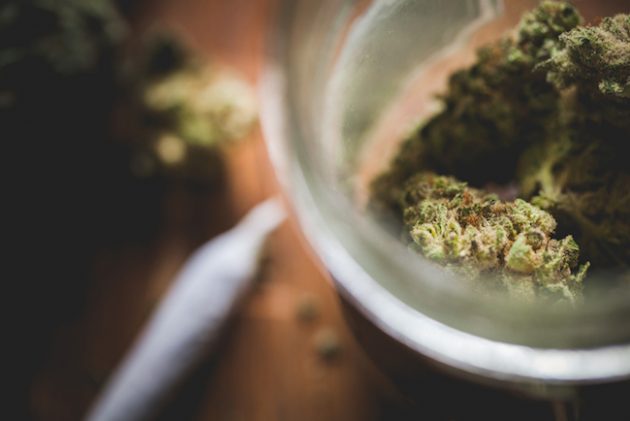
Why is cannabis so expensive in some provinces? Don’t ask Statistics Canada
by Michael J. Armstrong, associate professor of operations research, Goodman School of Business, Brock University

Government statistics do not provide reliable insight on varying weed prices across Canada

PHOTO: Getty Images
To evaluate cannabis legalization’s progress and success, Canadians need good information about legal product sales.
Unfortunately, most provincial cannabis agencies keep results overly secret. And some publicly available estimates lack precision.
One example of cannabis agency secrecy made the news last week. An investigation found cannabis oil prices vary “wildly” between provinces.
Inter-provincial price differences exceeded 50% for half the products surveyed. The report couldn’t explain the “fishy” differences.
Newfoundland and Ontario price higher
But it’s no secret that legal pot costs more in, say, Ontario than Québec. Ontario’s cannabis agency marks-up prices by triple what Québec’s more profitable agency does.
We can see this by analyzing their 2018-19 financial statements. Québec’s retail revenues averaged 23% above what it paid producers. By contrast, Ontario’s markups averaged around 77%.
The corresponding figures were 38% in Prince Edward Island, 55% in New Brunswick and 90% in Newfoundland. Nova Scotia and British Columbia didn’t disclose enough detail to estimate markups. The Prairie provinces don’t have government-owned shops.
To see the markups’ impact, consider a hypothetical cannabis oil product the producer sells to agencies for $20 plus tax. In Québec, the product might have retailed at $30.41. That includes $4.95 for agency markup, $3.76 for provincial taxes and $1.70 for federal taxes.
In Newfoundland and Labrador, the same product could retail for 54% more, at $46.98. That gives $19.35 to the agency, $5.21 to the province and $2.42 to the feds.
Undisclosed provincial priorities
Price differences aren’t inherently wrong. They just indicate different priorities. Higher markups provide more revenue for governments. Lower markups make legal products more competitive with illegal ones.
What’s wrong is that governments aren’t publicizing this key policy decision. Do Newfoundland and Ontario voters know their governments put more emphasis on making money than on taking business away from black-market vendors?
Are Nova Scotia and British Columbia residents curious about their politicians’ undisclosed priorities?
Unfortunately, this is just one example of provincial pot paternalism.
Consider a simple question: How much cannabis does your province sell?
Québec answers that question best. Its cannabis agency’s quarterly and annual reports are very detailed. New Brunswick is similarly open about its results.
Other provinces are less transparent. They issue brief quarterly announcements or terse year-end summaries. Supposedly “open for business” Ontario hasn’t provided a full quarterly or annual report since March 2018.
Not knowing provinces’ real numbers, we have to use federal approximations.
For example, Statistics Canada recently estimated that national cannabis sales hit $146 million in December, up 8% from November. It estimated provincial sales too.
Imprecise federal estimates
Such estimates are never perfect. But for cannabis, the margins of error can be substantial.
Consider total sales during legalization’s first six months. StatCan’s estimate for Prince Edward Island was bang on, coming within 2% of the actual total.
But it undershot British Columbia’s sales by 50%: $9.3 million estimated versus about $18.8 million actual.
It also underestimated Québec’s sales by 17% for September to December 2018. And overestimated them by the same amount the next quarter.
The agency has since made changes. It apparently now gets sales data from Health Canada’s cannabis tracking system, rather than just store surveys.
Unfortunately, some problems remain. StatCan said it had “excellent” data for Nova Scotia’s October to December sales. But its estimate was 25% too low.
StatCan’s estimates are certainly better than nothing. But even on a quarterly basis, they’ve only been accurate to within about plus or minus 35%, 19 times out of 20.
‘Legal’ sources?
StatCan also just compared cannabis usage before and after legalization. Its graphical summary indicates that before legalization, 23% of consumers reported getting some of their cannabis from legal sources, versus 52% after.
However, StatCan’s accompanying report notes the actual authorized cannabis user count before recreational legalization was only one-third of its estimate. And Health Canada’s website shows the number who actually bought cannabis legally was only one-seventh of the estimate. That’s a big inaccuracy.
Measuring progress
Canada is ahead of countries like the United States and New Zealand on cannabis legalization, but a lot of work remains. Industry must reduce costs and improve quality. Governments must learn from each other’s successes.
But that’s difficult when key numbers are hidden or uncertain. Businesses, governments and voters need good measurements of legalization’s progress to know what changes are needed.
For example, the New Brunswick sales estimate jumped 18% in December. Does that represent clever agency retailing? Improved government policy? Or statistical miscalculation? Currently, we can’t tell.
How can we decide where to go, if we aren’t even sure where we are?
– This article is republished from The Conversation under a Creative Commons license. Read the original article.
![]()